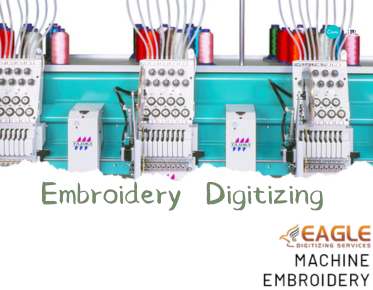What New Applications for Embroidery Digitizing Are Emerging with Smart Textiles and Wearable Technology?
In the rapidly evolving world of textiles, the integration of technology has given rise to smart textiles and wearable technology, creating exciting new opportunities for embroidery digitizing. This fusion of traditional embroidery techniques with modern technology is not only enhancing the aesthetic appeal of garments but also adding functional capabilities that were previously unimaginable.
The Intersection of Embroidery and Technology
Embroidery digitizing has long been a staple in the fashion and textile industry, allowing for intricate designs to be easily replicated on fabric. With the advent of smart textiles, this process is being revolutionized. Smart textiles, which are fabrics embedded with digital components such as sensors and microcontrollers, are paving the way for garments that can interact with the environment and the wearer. This integration requires precise embroidery digitizing to ensure that the electronic components are seamlessly incorporated into the fabric without compromising the design or functionality.
Wearable Technology: A New Frontier
Wearable technology is another area where embroidery digitizing is making significant strides. From fitness trackers to smartwatches, the demand for aesthetically pleasing and functional wearables is on the rise. Embroidery digitizing plays a crucial role in this sector by enabling the creation of designs that are not only visually appealing but also capable of housing electronic components. For instance, conductive threads can be used to create circuits within the fabric, allowing for the integration of LEDs or sensors that can monitor various health metrics.
Applications in Health and Fitness
One of the most promising applications of embroidery digitizing in smart textiles is in the health and fitness industry. Smart garments equipped with sensors can monitor vital signs such as heart rate, temperature, and even hydration levels. These garments rely on precise digitizing services to ensure that the sensors are accurately placed and that the data collected is reliable. This technology is particularly beneficial for athletes and fitness enthusiasts who require real-time feedback on their performance.
Fashion and Aesthetics
Beyond functionality, embroidery digitizing is also enhancing the aesthetic appeal of smart textiles. Designers are now able to create intricate patterns and designs that incorporate technology, offering a unique blend of fashion and function. This has led to the emergence of garments that light up, change color, or even respond to environmental stimuli, providing a dynamic and interactive fashion experience.
Challenges and Considerations
While the potential for embroidery digitizing in smart textiles and wearable technology is vast, there are several challenges that need to be addressed. One of the primary concerns is the durability of the electronic components when integrated into fabric. Ensuring that these components can withstand regular wear and tear, as well as washing, is crucial for the longevity of the garment. Additionally, the comfort of the wearer must be considered, as the integration of technology should not compromise the feel or fit of the garment.
The Role of Eagle Digitizing
Eagle Digitizing is at the forefront of this technological revolution, offering high-quality embroidery digitizing services that cater to the needs of smart textiles and wearable technology. With over 25 years of experience, Eagle Digitizing provides solutions that ensure the seamless integration of technology into fabric, maintaining both the aesthetic and functional aspects of the design. Their expertise in minimizing thread breakage and ensuring smooth sew-outs is invaluable in the creation of smart garments that are both durable and visually appealing.
Future Prospects
As technology continues to advance, the applications for embroidery digitizing in smart textiles and wearable technology are expected to expand. The potential for innovation in this field is immense, with possibilities ranging from garments that can charge electronic devices to those that can provide personalized climate control. As the industry evolves, the role of embroidery digitizing will become increasingly important in bridging the gap between fashion and technology.
In conclusion, the integration of embroidery digitizing with smart textiles and wearable technology is opening up new avenues for creativity and functionality in the textile industry. As designers and manufacturers continue to explore the possibilities, the future of fashion looks set to be more interactive and technologically advanced than ever before. What new innovations will emerge as this field continues to grow, and how will they reshape our understanding of textiles and fashion?


